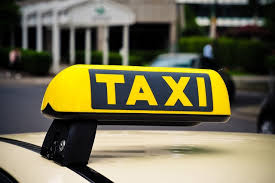
larnaca to paphos — this is one of the most frequently traveled routes on the southern coast of Cyprus, linking two cities that offer very different experiences: Larnaca with its relaxed waterfront and historic charm, and Paphos with its archaeological treasures and resort atmosphere. Whether you are a first-time visitor, a repeat traveler, or a local planning a day trip, understanding the transport options, travel times, costs, and local tips will help you make the most of the journey and maximize your time exploring.
Distance and travel time: The direct distance between Larnaca and Paphos is about 80 to 85 kilometers (50–53 miles), depending on the route. By road, the journey typically takes between 55 and 90 minutes. Travel time varies with the chosen mode of transport and traffic conditions — summer weekends and holiday periods can add delays, while off-peak hours offer smoother travel. The most common driving route follows the A6 motorway, a modern road that connects the two cities efficiently.
By bus: Public buses are the most economical option. Intercity buses run between Larnaca and Paphos several times a day, though frequency can be limited on weekends or public holidays. Buses are comfortable and offer a low-cost way to see countryside views. Expect journey times around 90 minutes to two hours, depending on stops. Buying tickets at the station or online (where available) is straightforward; keep small change or a card handy. For travelers on a budget or those not in a hurry, the bus provides reliable service without the need to navigate yourself.
By private transfer or taxi: A private taxi or pre-booked transfer delivers door-to-door convenience and faster travel. Taxis can be booked for immediate departure or reserved in advance for an agreed price. Transfers are more expensive than the bus but are ideal for groups, families, or anyone carrying significant luggage. Expect a private taxi to complete the journey in about 55–75 minutes depending on traffic. When calculating cost, consider splitting the fare among travelers to make it more economical.

Car rental and driving: Renting a car offers maximum flexibility — you can stop at scenic viewpoints, small coastal towns, or wineries along the way. Roads between Larnaca and Paphos are well-maintained; however, remember that Cyprus drives on the left. Speed limits are generally 100 km/h on motorways and lower in towns. Allow time for parking in popular Paphos areas like the harbour and archaeological park. Fuel prices, insurance options, and any one-way rental fees should be checked beforehand. For an independent itinerary this is often the best choice.
Shared shuttles and ride-sharing: During peak tourist seasons, shared shuttle services operate between major hotels and airports and can be an efficient compromise between cost and convenience. Ride-sharing apps are less prevalent than in larger countries, so availability varies. For groups traveling together, arranging a shared transfer can reduce costs while still offering a direct route to your destination.
What to expect on arrival in Paphos: Paphos is a UNESCO World Heritage site famous for the Paphos Archaeological Park, the Tombs of the Kings, and numerous mosaics and ancient ruins. The harbour area is compact and walkable, with restaurants, cafes, and boat trips available. If your plan is sightseeing, allocate time for the main archaeological sites and consider guided tours to enrich the historical context. Paphos also offers beaches and seaside promenades, ideal for a relaxed afternoon after a morning of travel.
Planning tips: Start your journey early if you want to fit a full day of activities in Paphos — museums and archaeological sites open in the morning and can get busy later in the day. Check opening hours and seasonal closures, especially for smaller attractions. If traveling in summer, bring water, sunscreen, and a hat; Cyprus can be very hot and sunny. Book transfers or car rentals in advance during high season to avoid last-minute price hikes or limited availability.

Costs and budgeting: Budget travelers relying on buses should plan for the lowest door-to-door travel cost, while taxis and private transfers are mid- to high-range. Car rental costs depend on the vehicle type, insurance, and rental duration; fuel and parking add to the total. Many travelers find that splitting the cost of a taxi or renting a small car among two to four people gives a good balance of convenience and affordability.
Accessibility and luggage: Most intercity buses are accessible and have space for luggage, but check specific vehicle types if you need mobility assistance or are traveling with oversized items. Taxis and transfers usually accommodate more luggage without issue, while rental cars provide full control over storage space. If you require special assistance, contact service providers in advance so arrangements can be made.
Safety and regulations: Road conditions are generally good, but adhere to local traffic laws. Seat belts are mandatory, and mobile phone use while driving should be hands-free. If you plan to drink, remember Cyprus enforces strict drink-driving limits. Keep personal belongings secure while visiting crowded attractions and consider travel insurance that covers trip interruptions or vehicle incidents.
Suggested itineraries: For a day trip, leave Larnaca early, arrive in Paphos mid-morning, visit the archaeological park and the mosaics, enjoy lunch by the harbour, then spend the afternoon at a nearby beach or lighthouse. For an overnight stay, add a visit to the Tombs of the Kings, a boat tour to see sea caves, and a leisurely evening in the Old Town. Combine Paphos with nearby wine villages or the Akamas Peninsula for nature excursions.
Final advice: Traveling between Larnaca and Paphos is straightforward and rewarding. Choose the transport mode that best fits your schedule and budget, plan ahead during busy seasons, and allow time to explore Paphos’s rich historical and natural offerings. With a little planning, the journey can be both comfortable and an enjoyable part of your Cyprus experience.
